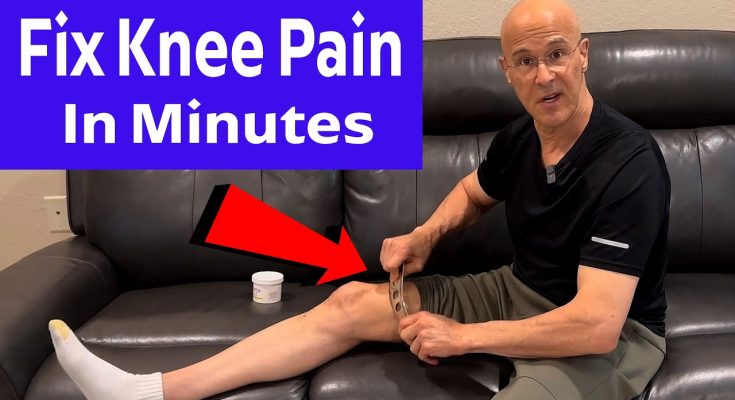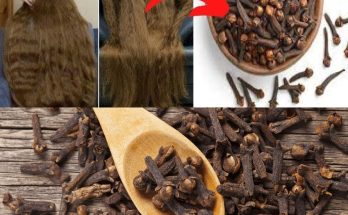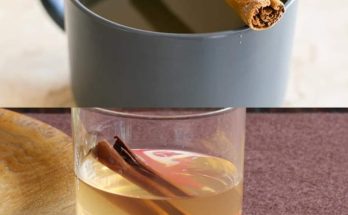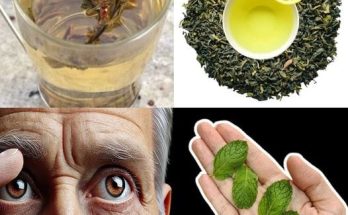If you’re having knee problems here’s something that’s really going to help you I’m going to show you a few different things you can do we’re going to help increase Mobility we’re going to break down the fascia the tissue Scar Tissue adhesions this is really important because this can help many of your conditions instead of doing anything invasive so the first thing that we’re going to do we’re going to address the muscles around the knee and this is a mile fascia release tool that
we use quite often I’ve used this in practice for many many years but most of you are not going to have this although you can get smaller ones they’re not expensive or you can use the edge of a fork or the edge of a spoon make sure the edge is not really thin the thicker the better as you see this is thicker uh we don’t want anything too thin so what we’re going to first do is we’re going to apply an amoliant this is a massage oil you can use almond oil you can use coconut oil whatever you
like I like to apply it around the knee so after we put this on just put a drop on a little bit this is going to cause allow us to have that sliding motion to where we’re not going to have any resistance on the skin so once we have our lotion set we’re going to take the tool and we’re going to put it on an angle not directly on top but a little angle if it’s 20 25 30° it doesn’t really matter so much but the key thing with this technique is you don’t want to push hard it’s real shallow for example the quadricep
muscles attached to the top of the knee but right around the top of the knee area if you push down you feel something real gritty just going light where it’s gritty there are usually adhesions so what we would do is we would just lightly stroke it like this okay now what we’re doing here is we’re going parallel to the muscle but a trick is that whenever you have adhesions it’s good to go perpendicular to the muscle too as well so as we do this and you’ll stroke it about 10 times not too hard it
may start to turn a little bit red and that’s it so once you get the other areas you can start going on angles if you feel that grittiness in there and then you can go to other areas right above it this is what you’re going to do just stroke it nice and easy and as you do it it may be sore you can come off that area go to a different area and then go back again remember perpendicular to the muscle so whichever way the muscle is going across the muscle is very very effective as well as going on different angles now many of
you may find it easy easier to start on the lower part than work your way towards me like this which is okay so if I went this way went this way went parallel perpendicular this way it’s all good now there are many muscles from the hip particularly the sorus muscle we have the gillus muscle the muscles that cross the knee joint so if you’re having knee pain you have to address these muscles because the muscles are excessively contracted or imbalanced because your pelvis is off or the hips are off or your gate is off
you’re not walking correctly or let’s say you’re spending a lot of time sitting or you’re doing uh some type of athletic event you’re just going too hard and you could have hurt yourself you want to address areas lightly around the knee you don’t want to go on the bones but you want to go around the knee there’s a lot of different tendons in there but you’re mainly going to be on areas where there is is soft tissue for example on the outside of the knee you’ve got the hamstrings you got the abductor muscles
the tensor fascial L the ilal tibial B and if we come across here and obviously you can work higher up all these muscles and tendons are all attributed to the knee because they attach at the knee joint or below the knee joint so you really want to make sure you spend about five or so minutes kind of searching for different areas uh where you may find those grittiness that adhesion so same thing here if it was a spoon okay parallel perpendicular you can go on angles and you’ll notice once you start to release that grittiness it starts to
get smooth again which is kind of exciting because then you know you’ve done something breaking down adhesions adhesions in the within the muscle you have areas the mile you have areas with in the muscle that actually Glide and when you build adhesions it keeps that gliding from moving smoothly so by breaking those adhesions down you get that function back so here is your your your spoon fork same thing I like it nice and wide you can come on the fork you don’t need anything fancy but you must have a good emoon a good type of
lotion to allow it to Glide now you’ll notice if you see this it gets a little bit red which is good that’s increase blood supply hyperia okay you’ve got a lot stuff going on but you’re going to notice that once you free up all these muscles and you’re going to see a huge difference immediately when you get up now one of the most important lessons we can learn here is how we can make sure that the kneecap is mobilizing particularly when we walk when we sit when we do our activities when we play sports this is a
big big problem that’s overlooked and I want to address it and I’m going to show you how to fix many of these problems the the kneecap which we call the patella is a freely movable knee freely movable bone and by the way I want your leg to be relaxed not contracted and tight uh if you contract the quadriceps it’s going to go down you’ll see the quadriceps will contract but I just want it nice and loose on your heel to where when you touch the the kneecap it should be nice and loose if it’s not
loose it means you’ve you’re tightening the muscles but just really relax everything now here is what we need to do we need to check the kneecap it needs to move down inferior up Superior that way which is lateral and this is medial towards it and what you want to do is you want to check the kneecap to make sure it’s moving in all the directions also you want to make sure it’s moving this way and this way so eight directions down up in out angle angle it needs to move in all those different directions and if it’s moving all those
directions there’s not a whole lot you need to do but everyone when I say everyone 99% of the people including myself can find an issue here because we can develop adhesions underneath the KNE cap which can start allowing it to stick so when we walk the kneecap is not moving now why is that important because you have important muscles the quadriceps attached to the top of the kneecap and every time you walk walk or contract if you’re sticking underneath that kneecap you’re causing inflammation you’re causing dysfunction you can lead
to uh degenerative joint disease arthritis problems with inflammation and that can really set off a whole Cascade of problems so here’s what we do we want to check Mobility as I go down remember it has to be loose relax your leg down and up okay as I go down look at my kneecap it moves good but watch when I go up it’s locking it’s not moving good here okay we’ll keep that in mind now I’m going to come out lateral it’s moving okay but Watch What Happens medial much easier okay and then we’ll go I on
diagonal on both sides and it’s moving good on the diagonal outwards but as I come up again it’s locking because that Superior that that that area that I checked this way is not moving so anytime you go in those same directions you’re going to have limitation or fix ation as I go this way and as I go this way still locking because of the superior area is not coming upwards it goes down fine but not coming up so how do we fix it the areas that are not moving are the areas you want to put impulses into by putting impulses you
can release it and once you get it you have it it’s that easy so what what you do is you take your thumbs I’m sorry you take your middle fingers and you’ll wrap it around as you see right here and you can take your thumb wherever you want to put it but you want to kind of relax everything else and then when you pull it the tension you’re going to pull the tension out then you’re going to do a little impulse just like that okay sometimes you hear a little click in there it’s a joint okay pull the tension
impulse impulse so you can do a few of these impulses and right after that let’s check Mobility cuz I felt the release in there look how it’s moving now huge difference huge huge huge let’s check the angle okay see how it’s moving here perfect so right now it’s perfectly moving I had no Mobility going upwards which I’m glad I didn’t because you can see before and after so if I bring it downwards and let’s say it’s locking what do you do take your thumbs behind it I’m just telling you in case you have
this issue and little take the tension out look tension out push on it tension out and then impulse impulse impulse impulse then recheck okay if it was going laterally you take the tension out however you want to use your thumbs watch my thumbs impulse impulse if it was going immediately okay thumbs on the outside this got to be relaxed impulse impulse once you do that and you free up this patella I promise you you are going to see like Miracles not tomorrow like right immediately that’s how exciting this technique is so in summary here’s a
few things we need to do number one address the knee if it’s inflamed and swollen yes you want to use ice but if you notice it’s gritty in these muscles definitely try to get that grittiness out little bit of scraping superficial don’t push deep it should not hurt you and do not injure yourself remember never go over bone only soft tissue wherever it’s hard stay away from then will check the patella making sure it’s mobilized making sure everything’s moving correctly and you can do this as
often as you need to but you’ll see this will really do wonderful things for you because the patella is probably one of the most commonly number one Overlook condition with knee problems remember all these muscles attach into the kneecap and if you have imbalance in those muscles it will throw the kneecap off which will lead to a lot of dysfunction so please share this video with your friends and family leave your comments below and most important make it a great day I’m Dr Alan Mandell.
Here are the key points
- Fascia Release Technique: Use a fascia release tool or a household item like a fork or spoon with an emollient (massage oil) to gently massage around the knee. Focus on areas where you feel grittiness or adhesions, applying light pressure and stroking parallel and perpendicular to the muscle fibers.
- Addressing Muscle Imbalances: To relieve knee pain, work on the muscles around the knee, including those that cross the knee joint, such as the quadriceps and hamstrings. Ensure to address muscle imbalances that could affect knee function.
- Knee Cap (Patella) Mobility: Check and ensure that the patella moves freely in all directions (down, up, lateral, medial, and diagonally). If movement is restricted, apply gentle impulses to release tension and improve mobility.
- Technique for Improving Patella Mobility: Use your thumbs and fingers to apply gentle pressure and impulses around the patella to free it from any adhesions or restrictions. Recheck the mobility after treatment.
- Overall Knee Care Advice: Use ice for inflammation and ensure that you are not injuring yourself during the process. Regularly check and improve patella mobility and address muscle grittiness to prevent knee dysfunction and improve overall knee health.
Our knees take lots of stress from walking, running, bending, sitting, being overweight and having poor posture. Degeneration of the joint, commonly known as arthritis occurs from these excessive loads and improper weight bearing of the knees. Many knee problems (that is commonly overlooked) come from our patellae which is our kneecap.
When the kneecap is not moving correctly this commonly causes compensation to other areas, and ultimately pain. I will show you something that hopefully can make magic for your knee discomfort. Good Luck! Dr. Mandell



